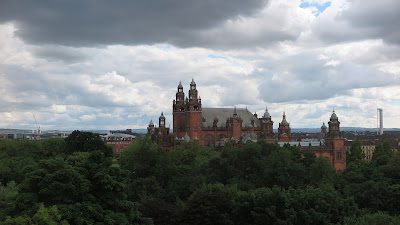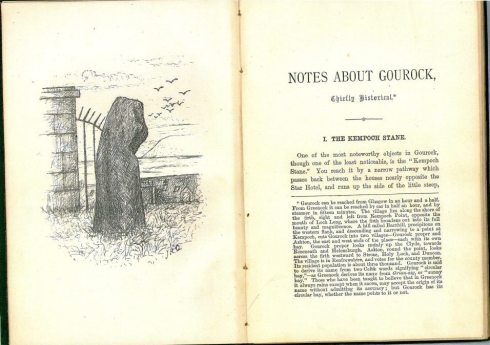 |
| Buachaille Etive Mor seen from Beinn a'Chrulaiste |
Covid restrictions
But this isn't a normal year. With the Covid-19 pandemic still raging onwards I would like nothing better than to spend my downtime in the outdoors, getting the chance to stretch my legs and clear my head. As I live in Glasgow however, the higher rates of infection in the city have meant that for several months now travel restrictions have been in place to reduce the risk of infection being spread. At the start of the year I planned to jog, in stages, from St Andrews to Largs (for no great reason) but this too was thwarted near the end, when I had frustratingly got as far as Weymss Bay before travel restrictions meant this non-essential trip had to be paused. Instead I am spending my time in Glasgow vicariously enjoying the hills and the outdoors by reading about other people's exploits.
With various restrictions in place for over 9 months now, with many people's foreign holidays cancelled, and closed venues, there has been a growth in the numbers of people exercising outdoors and some concerns raised that the rural infrastructure is being stretched. Footpaths need maintained, also public toilets have often been closed, car parks overcrowded and rural communities which often rely heavily on visitors for income. They are likely to suffer heavily due to Covid restrictions. It is maybe a timely reminder about the importance of investing in our wild areas and rural communities to allow us all to enjoy them in the future, and also there is an unmet need to educate people in how to look after these fragile assets. Counting on volunteers and charities alone is not enough.
Local travel
The tier 3 and tier 4 restrictions in Scotland that we have been under mean that only essential travel beyond our local council boundaries has been permitted. Travel is permitted for "local outdoor informal exercise that starts and finishes at the same place (which can be up to 5 miles from the boundary of your local authority area)".
This 5 mile limit has made me look for different walks from those I would normally chose. As well as taking in the green spaces of the many Glasgow parks, I have enjoyed walking along the Seven Lochs Trail from Hogganfield Loch to Drumpellier, along the edge of Glasgow north of Easterhouse. It has also made me re-visit the Kilpatrick Hills (the Kilpatrick Braes car park is just over 4 miles outside the Glasgow boundary) - when I was at school we used to hitchhike out along Great Western Road at the weekends and then head into the Kilpatricks and the Campsie Hills beyond. Our next youthful walks took us onto the West Highland Way, which marked its 40th anniversary in subdued fashion this year, by telling people to stay at home, and some outdoor enthusiasts got together by organising successful virtual walks and races this year. My recent, more local walks have been very nostalgic (and often very wet it has to be said). I have enjoyed the views over Glasgow from Cathkin Braes, from Queens Park, Ruchill Park and Park Circus, but it is the wilder, more remote hills that I am missing.
 |
| Glasgow seen from The Kilpatrick Hills |
 |
| Bishop's Loch on the Seven Lochs Trail |
The travel restrictions are necessary, and are important so I am very happy to remind myself (through gritted teeth) that the hills will always be there. I would strongly encourage people to resist the temptation to bend the travel rules, as they are there for all our benefit.
I am however collating a growing list of hills, mountains and walks that I want to undertake as soon as it is practical and permitted. Whilst confined to the city I seem to have been reading more and more books about the great outdoors, and will share a few with you that I have enjoyed this year. If you can't be there in body, you can be out there in spirit. I have tried to include a selection of memoirs, poetry and guides that I can lose myself in.
My reading matter - a personal selection
- Islands
At the start of the year I had booked my first ever trip to the Orkney Islands, and read as much writing from the islands as I could lay my hands on. My Easter trip had to be cancelled due to Covid, but this book is one that I was glad to have found. Overwhelmed by her hedonistic London life, the author returns to her childhood home in Orkney and describes the rhythms and wildlife of island life. Mental illness, alcoholism and corncrakes. All aspects of life are there.
From the people that brought you the fabulous Walk Highlands website comes their latest book. As exhaustive list of all the Scottish islands that can be easily travelled to, with suggested walks and sites. Whether you want to work your way through all the islands ticking them off, or just look at the excellent photographs and cherry pick a few day trips, it is a thoroughly delightful book.
The men of Ness, at the northern tip of Lewis, have annually set sail to the remote island of Sulasgeir to hunt gannet chicks, guga, for many years. Their ongoing tradition is part of the fabric of their village life and the book interweaves a social history of the islanders and their ancestors. Mixing in Gaelic and English, poems and prose it is not a romantic picture of life there, but full of all the hard work and danger generations have faced there. (Having eaten gannet when I was in Iceland, I don't think that it is no bad things the numbers allowed to be taken each year and restricted).
Angus Peter Campbell worked on this collection whilst living in a thatched house in his native South Uist. Gaelic poems with his own translations (which sometimes poke fun at the fact a translation is not always possible) of everyday life, walks up a hill, childhood recollections, ferries and seasons. Personally I enjoyed the poems here because it took me back to a time many years ago when I was briefly working in Daliburgh in South Uist, where Gaelic was the first language of most of the people I worked with, and where my wife spent our last couple of weeks before our first child arrived.
- Mountains
I never head into the hills without first reading 4 different routes up any planned mountain, and spending an evening poring over an OS map. Sometimes I wonder if I get as much pleasure from planning trips as I do from actually carrying them out. The first guide to the Munros that I had, from the days before you could use the internet to find your way, was the SMC guide. If you keep using a book, you get to understand what the author means when they say "an easy scramble" or a "narrow ridge". Triangulating between Cameron McNeish's Munros book and the SMC one I can find the right level of challenge for my planned expeditions, and I know how long each book's "6 hours" will take me.
After decades of writing books, editing magazines, and presenting TV shows on Scotland's outdoors, Cameron McNeish recently published an excellent memoir (There's Always The Hills) which described how a working class Glaswegian fell in love with the mountains of Scotland, and elsewhere. In this new book he recounts trips to his favourite places, from Borders hillsides to Shetland beaches, with many familiar mountains in between. The next best thing to actually getting out into the hills myself.
The bizarre sight of commercial climbing crews queuing up to reach the summit of Everest is an abject vision. This book tells in great detail about one such climb in 1996 which resulted in the death of eight climbers. It is a gripping read, and a cautionary tale more strange than any fiction. A reminder that turning back and not reaching a summit can often be the most sensible decision you make on any given day.
I had read this book a couple of years ago, looking for early stories of Glen Coe mountaineering when I was writing an obituary for an old family friend. Hamish MacInnes was a mountaineer, and has been described as "the father of modern mountain rescue in Scotland". He died earlier this year at the age of 90 and this memoir of his days in Glen Coe mountain rescue gives a great insight into the affinity some people develop with the mountains.
Written over the year 2014, when Scotland was gripped by the independence referendum, these poems by Kathleen Jamie cover a variety of topics. However the ones where I have turned down the page corners to read again are those in the natural realm, where the characters are "oxter-deep in a bramble-grove". One of my favourites finds itself on one of my favourite mountains, Ben Lomond. It starts "Thae laddies in the Celtic shirts" and when I walked up Ben Nevis earlier this year a similar group clad in green and white striped tops were making their way up that mountain, a very real scene, and a reflection of the communal sense of ownership we all feel we have for our mountains. Or at least we all feel we have a right to be there.
- Countryside
A few years ago, bored of running around the same city streets and looking for new routes, I picked up this book by Susie Allison. It has suggested routes from all over Scotland, through forests, over hilltops and along riverbanks. Suitable for walks or runs I have used it when I have been on holiday or with work in different parts of Scotland to find interesting and diverting routes. It's addictive once you start and has led me to start entering hill races. I am not going to win any medals, but it is a different way to see a mountain or hill, unencumbered by boots and backpack.
The Fife Pilgrim Way is a new long distance walking route which tries to introduce you to some of the lesser known parts of the Kingdom. The book focuses very much on the history of the pilgrim routes, and the backstory to saintly Queen Margaret, the monasteries and mining of the region, much of it completely new to me before I decided to run the route twelve months ago. Who knew that there was an underground grotto in Dunfermline, and a witches grave on the foreshore at Torryburn? I previously always made for the mountaintops, but am growing to love the highways and byways too, and the stories you can uncover.
I did not know which of Jim Carruth's collections to include here as every one of them exudes knowledge and empathy for the realities of rural life. The son of a dairy farmer from Renfrewshire, the poet laureate of Glasgow in the book Killocheries presents a verse novella that observes a troubled man spending a year living and working on a farm. Fantastic storytelling.
I read this book when I was staying in a cottage up north one year and was completely immersed in it. Andrew Greig follows request Norman MacCaig made of him, to fish in the Loch of the Green Corrie on his behalf. Ruminating on friendship, land ownership, poetry and the countryside Andrew Greig and Norman MacCaig loved it is a lovely, reflective way to end my list.
These books were just the first ones that came into my head tonight, books I have read, re-read and enjoyed. Please give me your own suggestions of what I should read next in the comments below, and don't forget. STAY HOME, STAY SAFE.




























































